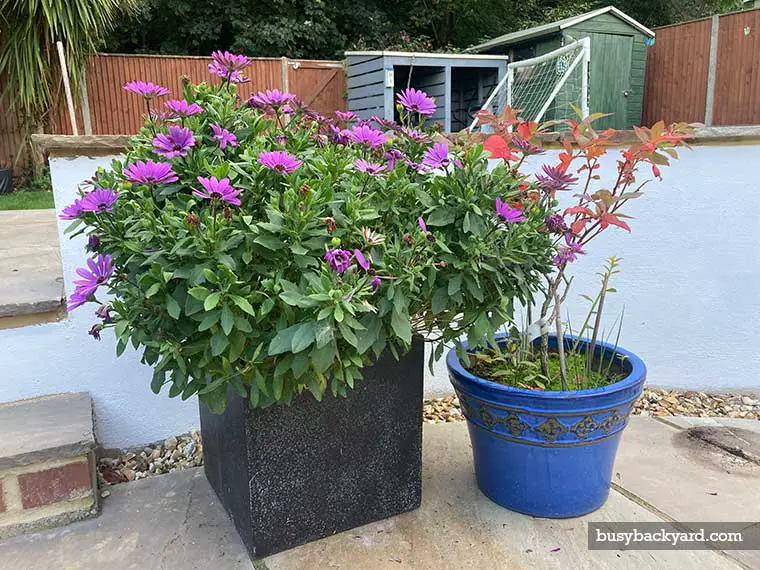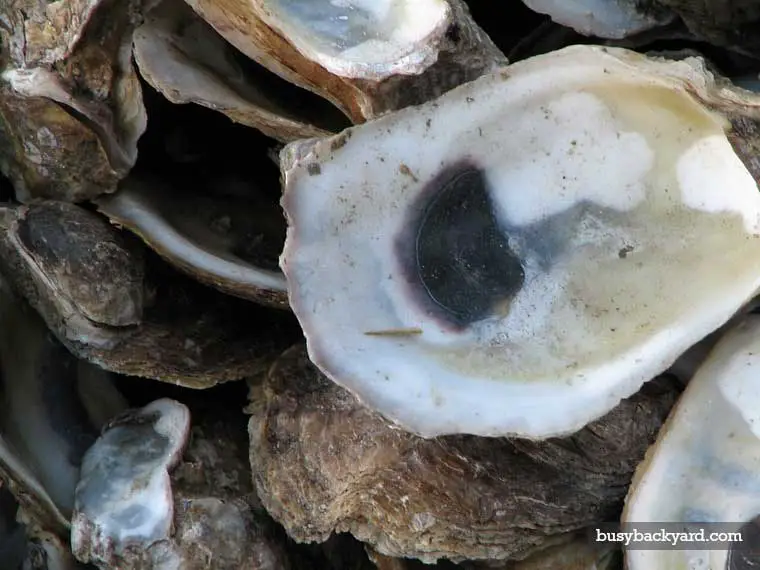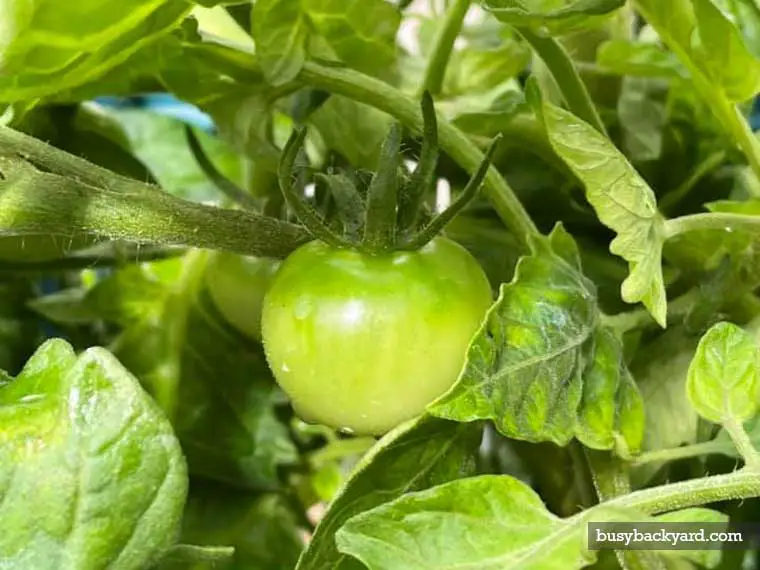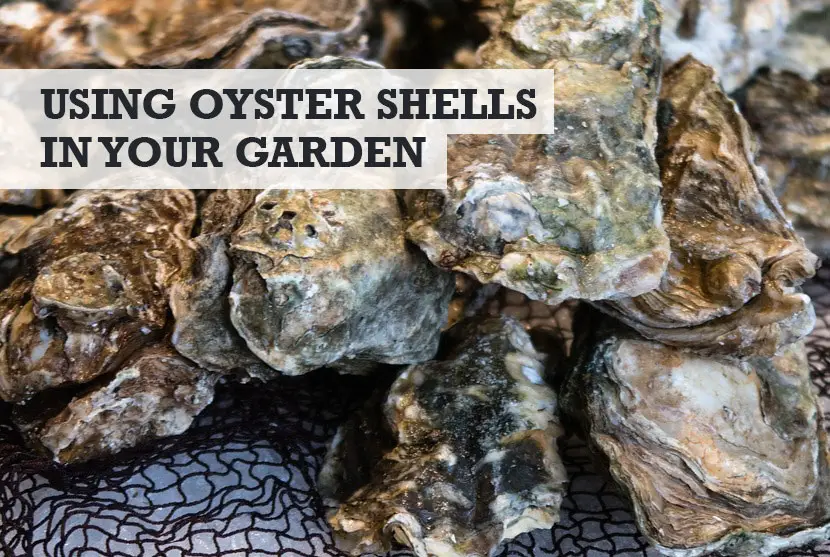Oyster shells are an old-school garden favourite. If you’ve not used oyster shells in your garden before, then your yard is missing out. They can be so good for your plants. If you want to know how to use oyster shells as fertilizer, the benefits, and more please read on.
Are oyster shells good for the garden soil?
Oyster shells are good for the garden and plants such as tomatoes, acting as a natural fertilizer for garden soil. Oyster shells will help to break up soil by reducing compaction. This makes it easier for roots to spread out in the spaces between ground up pieces of shell.
That’s just a small part of how good oyster shells in a garden can be. In this guide, you can learn so much more about the garden benefits.
Before I start though, if you don’t want to crush your own, you can buy crushed oyster shells on Amazon.
How to use oyster shells as fertilizer & more
1. Clean and dry the oyster shells then crush them up
It is best to leave cleaned, dried oyster shells out in the sun for a day or two to kill any bacteria on them if you plan on using them as a fertilizer. You will need to crush them up – lower down the page I’ve put instructions on how to grind oyster shells for your garden.
If you’re worried about contaminating the garden bed, place the shell bits into an airtight jar and store them in a garage or other darker area. When you’re ready to use them, pour the contents of your jar into a wheelbarrow and mix it up with a shovel.
2. Scatter the crushed oyster shell fertilizer around where roots will be
Once your shells are clean and dry, sprinkle them around plant roots when planting. The added nutrients will help your plants grow strong and healthy.
When putting the shell bits around seeds or seedlings, cover them with a thin layer of mulch to avoid fertilizer burn.

3. Use crushed oyster shells as mulch
You can also use ground-up and crushed oyster shells as mulch in your garden bed to prevent compaction and keep weeds at bay.
It is important to note that oyster shells will not mix well with the soil if you have heavy clay. The shells will also decorate your landscaping, adding a nice finish to your garden paths or stone walkways.
4. Place a shell ring around your plants
Another good reason so use oyster shells in a garden soil is to create a ring of ground shell around your plants, about six inches in diameter and three inches deep.
This will add nutrients to the soil and prevent weeds from growing and protect against pests like snails and slugs who will hate going on it. You can even make this ring around trees or other larger plants.
Oyster shell fertiliser benefits
Oyster shells as fertilizer are a wonderful addition to the garden for many reasons. Their porous nature means that oyster shells will absorb water, slowly releasing it as the plant needs it.
They will also help aerate your soil structure by adding spaces between ground bits of shell. This allows roots to spread out and break up compaction caused by large people or animals walking through your garden beds over time.
Here are how they are good for your garden soil with some awesome benefits.
1. Oyster shells are a source of calcium
Oyster shells contain calcium carbonate, a source of one of the essential nutrients for plants: calcium. This nutrient helps build strong cell walls and reduces damage from salt spray or exposure to pollutants such as motor oil or antifreeze.

Veggies that especially love calcium include broccoli, brussels sprouts, cabbage, cauliflower, cucumber, endive, lettuce, onion, and spinach.
2. Oyster shells balance pH levels in soil
The pH level of your soil will determine how well your plant can access nutrients. If the pH level in your soil is too low (acidic) or too (basic), certain nutrients will not be available to the plant.
Oyster shells as fertilizer benefit as they help balance each pH level and make nutrients more available for your plants.
3. Oysters shells are a good source of phosphorus
Oyster shells are high in phosphorus, which is necessary for healthy root development and blooming flowers. The flower parts of veggies such as broccoli, cabbage, cauliflower, and others rely on phosphorus to develop well.
Flowers that especially love phosphorus include azalea, chrysanthemum, dahlia, hydrangea, impatiens, lily, pansy, and petunia.
4. Oyster shells are a good source of magnesium
Like phosphorus, magnesium is a nutrient that plants need to develop all flowers and veggies. Roots, stems, leaves, blooms, and fruit will all benefit from the addition of this nutrient.
Flowers that especially love magnesium include aster, bougainvillea, cosmos, dahlia, gladiolus, and zinnia. Vegetables such as broccoli, brussels sprouts, cabbage, cauliflower, and others also require magnesium for healthy growth.
5. Oyster shells help to improve the quality of soil structure
Just as it can aerate the soil by allowing room for roots to spread out and break up compaction caused by people walking on garden beds, oyster shells will help improve the quality of your soil’s structure.
You can further improve drainage in your garden by adding sand or organic matter (such as leaves) to heavy clay soil. Improve water retention in sandy soils by mixing in some clay.
How do you grind oyster shells for the garden?
Once you’ve cleaned and boiled the shells, you can break them up with a hammer or other heavy object, but if you love your garden, this may not be the best way to go.
To reduce the risk of contamination from lead paint, you could use a coffee grinder instead. The best part? Coffee grinders are cheap and easy to find at local thrift stores.
To be honest though, you could put the oyster shells in a pillowcase, then smash the heck of it with hammer. You won’t get the powder though
- Place the cleaned shell pieces into your coffee grinder. Grind them until they reach a powder-like consistency.
- Store ground and crushed oyster shells in airtight jars for future use in your garden. You can also place it directly on top of the soil, where you will plant seeds or seedlings.
If you add crushed oyster shells to an existing plant, cover the area with mulch to avoid fertilizer burn.
What plants benefit from oyster shells in the garden?
Plants that love ground oyster shells include broccoli, brussels sprouts, cabbage, cauliflower, cucumber, endive, lettuce, and spinach. Flowers such as aster, bougainvillea, cosmos, dahlia, gladiolus, and zinnia also love a little oyster shell in their life.
What about oyster shells for tomatoes?
Oyster shells for tomatoes are a fantastic idea. I do this as I believe the calcium will be of great benefit to my tomato plants. I crush the shells up very fine.

Do oyster shells decompose?
Oyster shells contain calcium carbonate, which is one of the most insoluble substances that exist. Once used in fertilizers or soil additives, oyster shells will not break down quickly and decompose.
Because of that, oyster shells can be good for your garden soil for many years to come.
Why are there oyster shells in my yard?
If you’ve come her because you have found oyster shells in your yard, then it could be because a previous owner of your home used them as fertilizer in the garden.
But there could also be some other reasons why you might find oyster shells in your yard include:
1. Oyster shells for chickens
You might find oyster shells in your yard if someone living their previously has kept chickens. It could be that they were giving them a calcium supplement by feeding them crushed oyster shells can help.
It could be some were left behind before they were crushed up.
2. Shells used for landscaping
People also use oyster shells as a landscaping material because they are strong, durable, and pretty to look at. They can be used in the construction of paths, walls, driveways, and walkways.
Whole oyster shells can also be applied to driveways or garden beds to help prevent compaction during foot traffic. This means that this could also be another potential cause of why you are finding oyster shells in your yard.
3. Oyster shells left over from meals
Some restaurants serve oysters on the half. They can contain small pieces of crushed oyster shells, which customers might throw out at their table or drop on the floor.
The bits of the shell can also get stuck to shoes and be tracked into other areas outside of restaurants, including landscaping materials at nurseries, home goods stores, and various other establishments that sell landscaping supplies or furniture.
4. People put the shells there
Certain people hunt for oyster shells to use in their crafts. These people use the shells to symbolize prosperity and good luck, which is why crushed oyster shells are often found in Chinese restaurants.
They can also be used in creating decorative items such as wreaths or other decorations.
Handy Hint: I’ve previously written about reasons why you might have found seashells in your backyard. Some can also be applied to oyster shells.
FAQs
What are the different types of shells you can use in gardens?
Several types of shells can be used in gardens, including clams and scallops, and even peanut shells. You need to make sure that they aren’t too big or too small for your garden.
I would suggest you avoid used lobster or other seafood shells because they attract pests such as mice and rats. Regardless, always clean and boil before use to avoid attracting animals.
If you live in an area with many rodents around, try using cedar mulch instead, or place mothballs in between layers of mulch in your garden beds.
How do oyster shells help garden soil in simple terms?
When crushed up, oyster shells add important minerals such as calcium and magnesium, which improve soil drainage by breaking up clay soils. The added nutrients will help improve the health of your soil, allowing you to grow healthier plants.
How much crushed oyster shell shall I use in my garden?
You’ll only need to add a thin layer of crushed oyster shells when using them in your garden soil, bed or around plants and trees. You can also add them as mulch in larger gardens.
Conclusion
In conclusion, oyster shells are a great resource to use in your garden. They add important nutrients to the soil, discourage weed growth, and will improve overall plant health. This is especially beneficial for those with heavy clay soils as they don’t tend to mix well.
You might also like…
- Why you might find empty snail shells in your yard or garden
- How to stop squirrels digging up your lawn
Image in header via https://pixabay.com/photos/oyster-shell-market-food-seafood-3912999/


